When I was first starting on my flower journey, finding information about different cut flower varieties was nearly impossible to come by. The little information that was available was limited to a handful of books, catalogs, and a few online chat rooms.
As my passion and curiosity quickly outgrew the resources available, I started to experiment on my own. I applied for several growers’ grants in order to get funding to conduct in-depth variety trials on our small farm.
The first grants I received focused on trialing ornamental grasses and rose hips as cut flower material. From there, I expanded into celosias, ornamental peppers, different types of foliage and fillers—the list goes on and on.
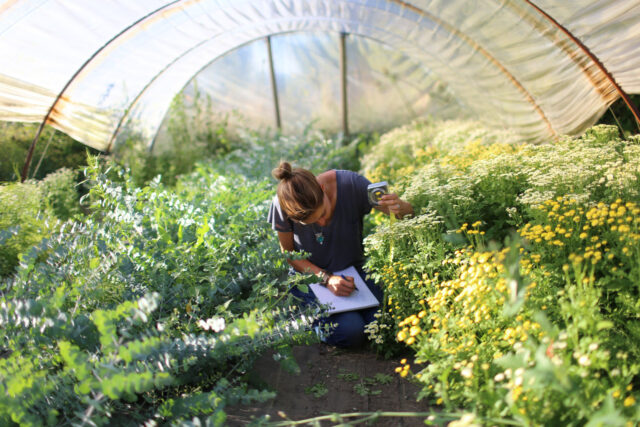
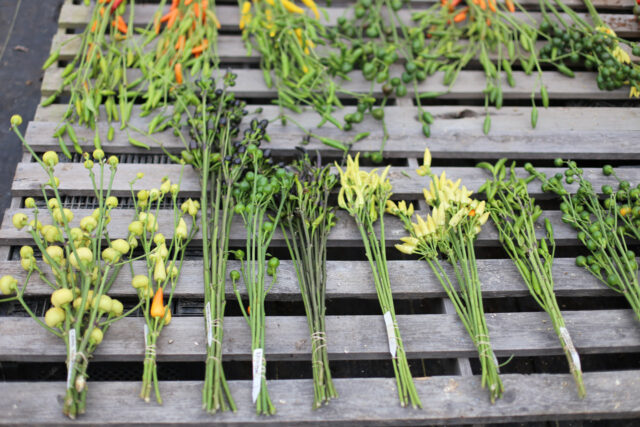 One of the requirements for grant funding was that I define my project goals from the start and outline the criteria that each variety would be measured against.
One of the requirements for grant funding was that I define my project goals from the start and outline the criteria that each variety would be measured against.
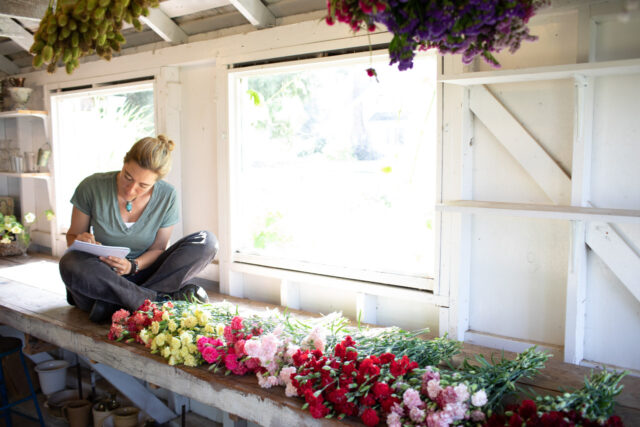 Throughout the season, I kept detailed notes and records that eventually were included in my trial reports.
Throughout the season, I kept detailed notes and records that eventually were included in my trial reports.
I shared my findings through numerous trade publications, including The Cut Flower Quarterly, and eventually took over writing the monthly flower column for Growing for Market magazine.
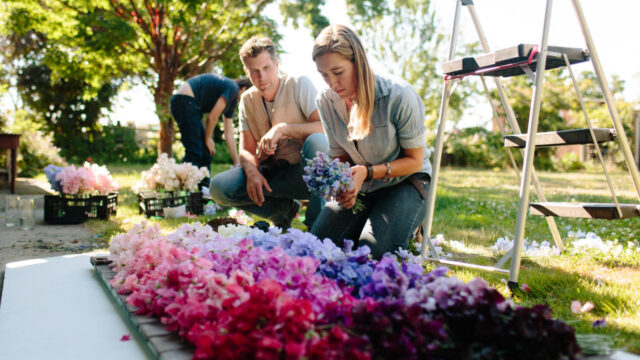 While I was deep in the process of learning how to conduct on-farm experiments and finding my voice as a writer, Chris was simultaneously teaching himself photography so that I could include pictures along with my findings.
While I was deep in the process of learning how to conduct on-farm experiments and finding my voice as a writer, Chris was simultaneously teaching himself photography so that I could include pictures along with my findings.
Together we set out to capture and share both the magic of the flowers growing on our farm and everything we were learning along the way.
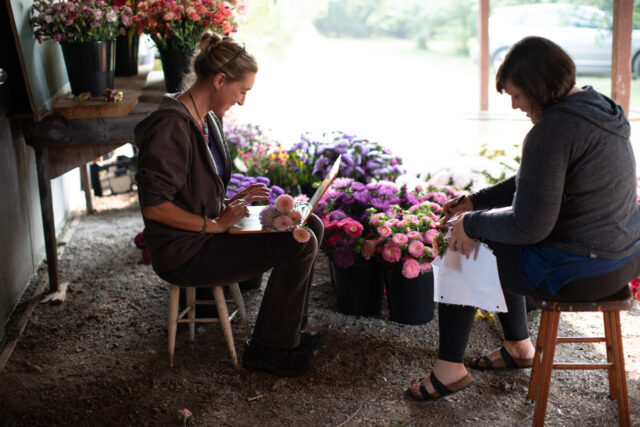
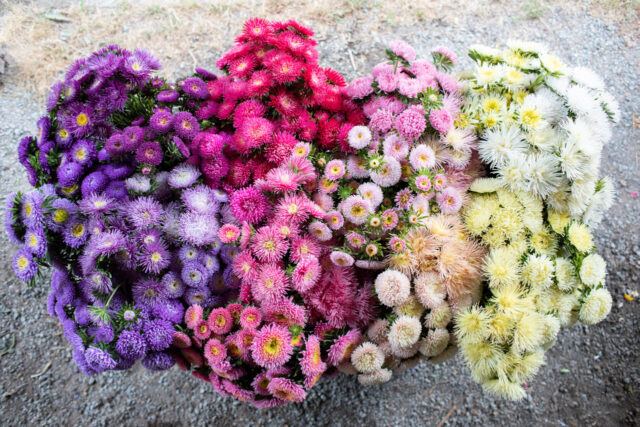 Since those early days, I have grown and tested thousands of different varieties, including annuals, perennials, biennials, bulbs, trees, shrubs, and vines, collecting detailed observation notes and photographs of them both in the garden and in the vase.
Since those early days, I have grown and tested thousands of different varieties, including annuals, perennials, biennials, bulbs, trees, shrubs, and vines, collecting detailed observation notes and photographs of them both in the garden and in the vase.
Every variety that I’ve trialed has been measured against a strict set of grading criteria, including overall plant health, vigor, stem length, beautiful coloring, a long vase life, and fragrance whenever possible.
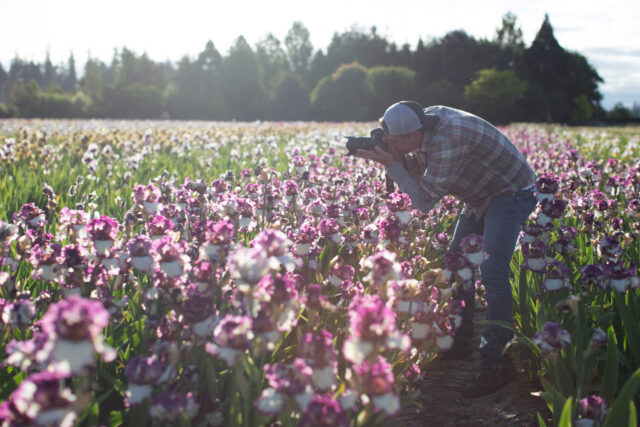
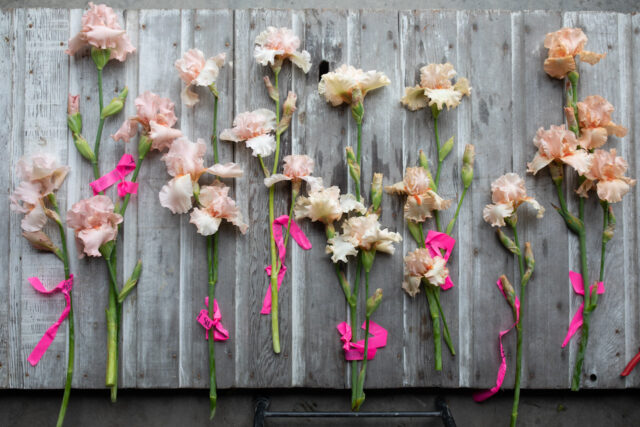 I had no idea when I started down this path that it would eventually become an entire library of work.
I had no idea when I started down this path that it would eventually become an entire library of work.
For many years now I have wanted to find a way to compile all of my findings and Chris’s beautiful photographs so that they could be shared with the world.
 This spring, after nearly a year of behind-the-scenes work, including compiling, organizing, cataloging, classifying, fact-checking, copyediting, testing, and a thousand other tiny details, the Floret Library was finally born. The amount of collective effort that has been poured into this project is unfathomable!
This spring, after nearly a year of behind-the-scenes work, including compiling, organizing, cataloging, classifying, fact-checking, copyediting, testing, and a thousand other tiny details, the Floret Library was finally born. The amount of collective effort that has been poured into this project is unfathomable!
A huge thank you to Chris for his beautiful photographs, Jill for all the help with the words, and our creative director Laura for championing this massive project—it never would have been possible without her love and care.
And a special thank you to Elora for spending an entire summer fact-checking, Jes for building us the library of our dreams, and Melissa, for the countless hours she poured into making sure every detail was just right.
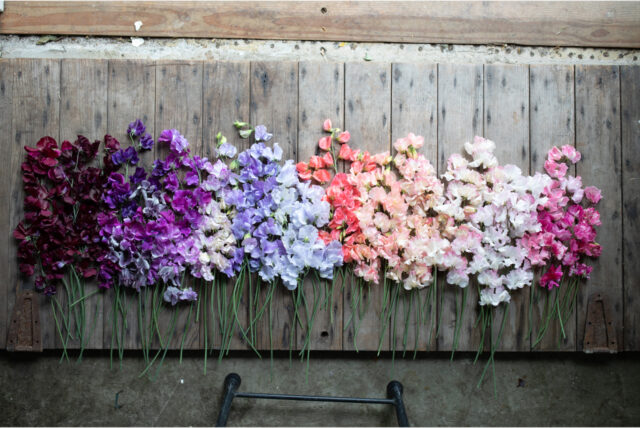 I am so excited to finally be able to share the Floret Library with you. This comprehensive, digital library of flowers is available to anyone, anywhere in the world to use for free.
I am so excited to finally be able to share the Floret Library with you. This comprehensive, digital library of flowers is available to anyone, anywhere in the world to use for free.
The library includes more than 1,500 unique cut flower varieties that have all been grown and tested here on our farm.
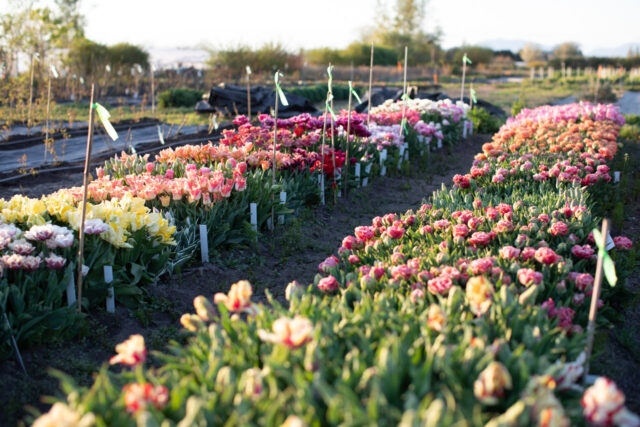 While we’ve tried to document every flower that is featured in the library as thoroughly as possible, you’ll notice that some varieties have more information and photos than others. When putting the library together we decided to go ahead and include all of the varieties in our records and plan to add to those that are light on information in the future.
While we’ve tried to document every flower that is featured in the library as thoroughly as possible, you’ll notice that some varieties have more information and photos than others. When putting the library together we decided to go ahead and include all of the varieties in our records and plan to add to those that are light on information in the future.
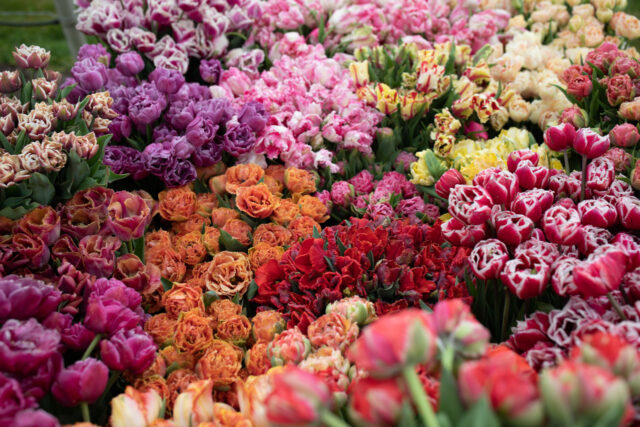 Each flower’s profile has been created based on how they perform in our Pacific Northwest climate. Growers in other locations may have different experiences, especially when it comes to days to maturity and height, but the information provided here should be a great place to start.
Each flower’s profile has been created based on how they perform in our Pacific Northwest climate. Growers in other locations may have different experiences, especially when it comes to days to maturity and height, but the information provided here should be a great place to start.
Each variety profile includes a detailed description of the plant’s characteristics, beautiful photographs, growing tips and tricks, and harvesting and vase life information.

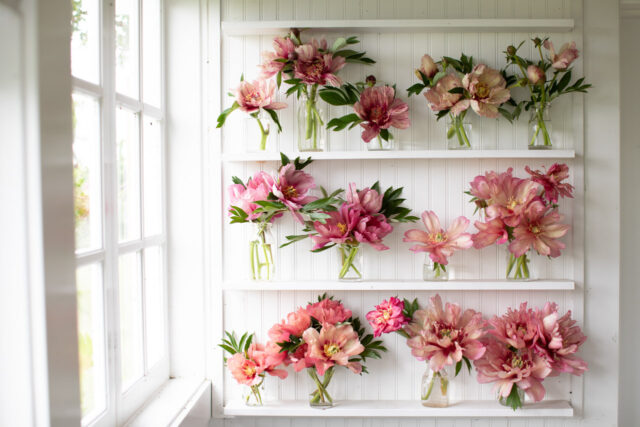 You can search the library in a number of different ways—by plant collection, by color, by form, or by special features.
You can search the library in a number of different ways—by plant collection, by color, by form, or by special features.
So you can do a deep dive into a specific group of plants like dahlias or chrysanthemums, or you can look at the entire library and filter based on your own set of criteria.
For example, if you’re a farmer planning what flowers to grow for your florist clients, you can filter by a desired color such as white, green, or blush/champagne. Or if you’re wanting to attract more pollinators into your garden, you can see what varieties they love the most.
If you don’t have any ground to grow in, you can also filter the varieties by which ones are suitable for container growing.
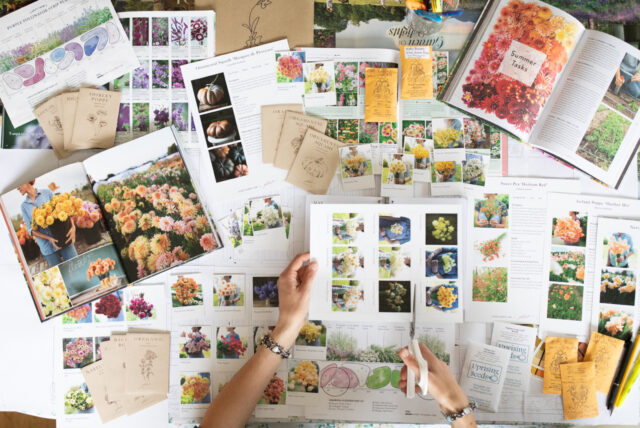 But the best feature of all is that the entire library is printable! If you’re a visual learner or a paper person like I am, this is going to be a game changer for you.
But the best feature of all is that the entire library is printable! If you’re a visual learner or a paper person like I am, this is going to be a game changer for you.
You can choose to print an entire group of plants, such as peonies, as a full set of planning cards, or you can narrow your selections by color, or another feature, and print only those. The planning cards include a beautiful color photograph and the full variety name.
These cards can be cut out and used for garden planning or wedding and event design.
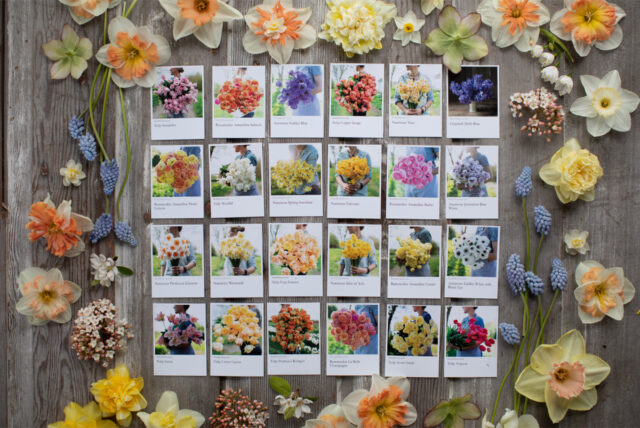
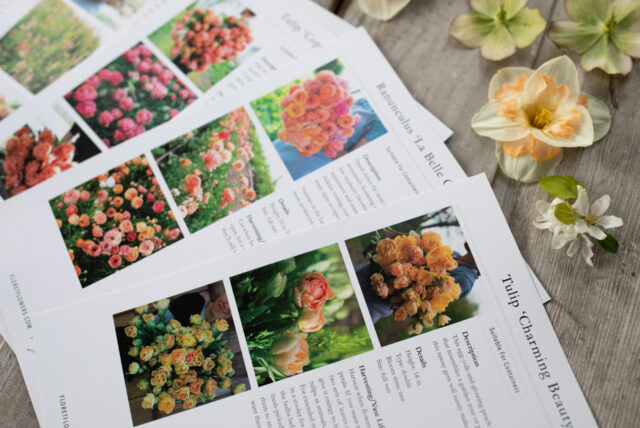 If you want to do a deeper dive into a variety, you can print its full planning sheet that includes multiple photographs, a full description, growing tips and tricks, plus harvesting and vase life information.
If you want to do a deeper dive into a variety, you can print its full planning sheet that includes multiple photographs, a full description, growing tips and tricks, plus harvesting and vase life information.
For a virtual tour of the library, including instructions for how to utilize the refine by and print features, be sure to visit the “How to Use the Library” page to watch some helpful tutorial videos.
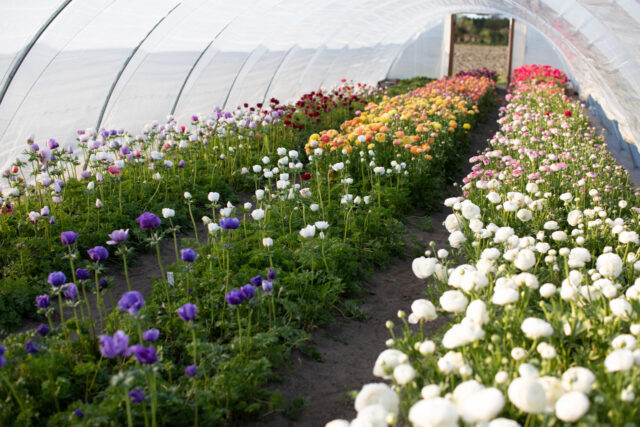 We’ve also updated and expanded my favorite sources for seeds, perennials, shrubs, trees, bulbs, and dahlia tubers.
We’ve also updated and expanded my favorite sources for seeds, perennials, shrubs, trees, bulbs, and dahlia tubers.
These favorite source lists include what I love about each company and what they specialize in.
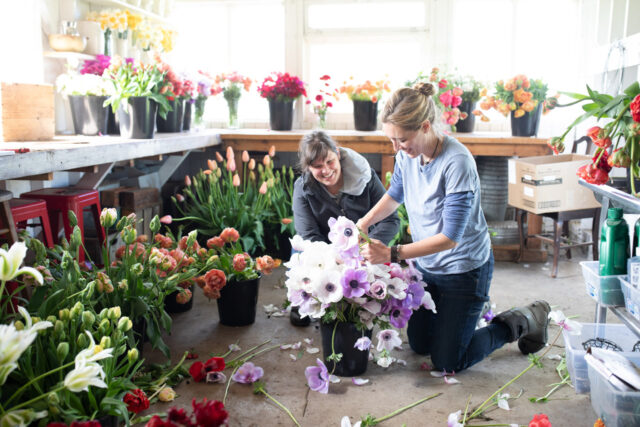 We have poured years of collective effort into the Floret Library and it is our gift to the world.
We have poured years of collective effort into the Floret Library and it is our gift to the world.
While we have made this information available to use for free, just a reminder that all of the words and images contained within the library are protected under copyright and it is actually illegal to duplicate or plagiarize this information.
If you see anyone using this material, please let us know.
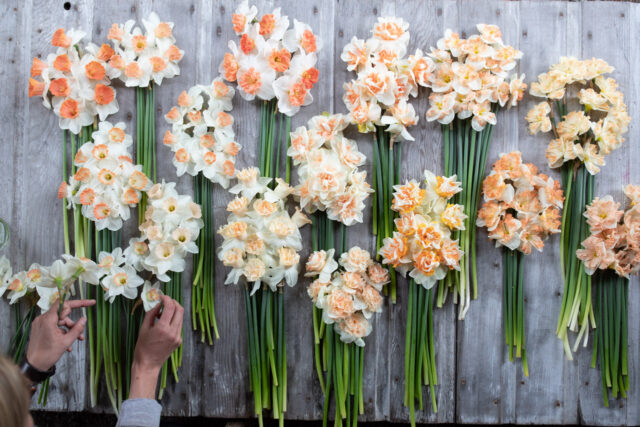 While we’ve tried our very best to ensure that all of the information and photographs are accurate, we will inevitably uncover some mistakes. If you see something that is incorrect or inaccurate, we would love to hear from you.
While we’ve tried our very best to ensure that all of the information and photographs are accurate, we will inevitably uncover some mistakes. If you see something that is incorrect or inaccurate, we would love to hear from you.
The beauty of the library being digital is that it can be expanded and updated as it evolves. My intention is that one day it will become the largest catalog of its kind, one that will keep expanding as I make new discoveries.
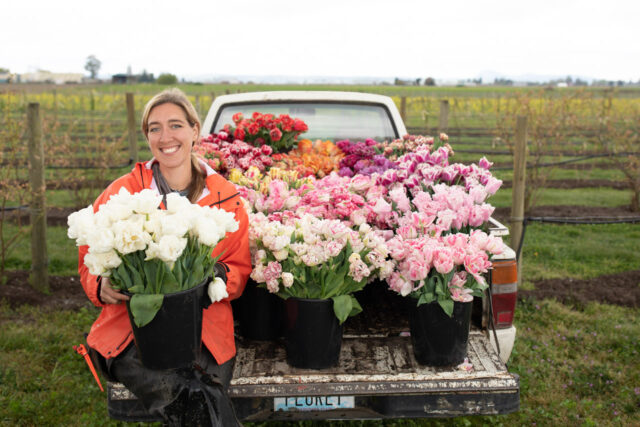 My hope is that the Floret Library will open up a whole new world of possibilities and help you discover new varieties to add to your garden. By shining a spotlight on these treasured varieties and the specialty nurseries that grow them, we can ensure that they are grown and preserved for future generations.
My hope is that the Floret Library will open up a whole new world of possibilities and help you discover new varieties to add to your garden. By shining a spotlight on these treasured varieties and the specialty nurseries that grow them, we can ensure that they are grown and preserved for future generations.
I hope you enjoy it!
Please note: If your comment doesn’t show up right away, sit tight; we have a spam filter that requires us to approve comments before they are published.

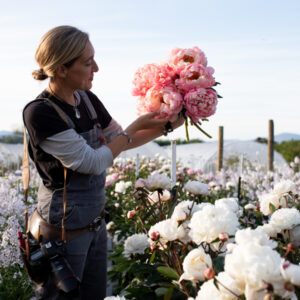

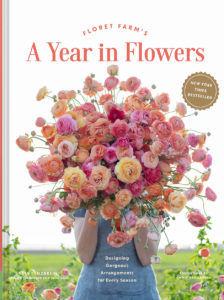
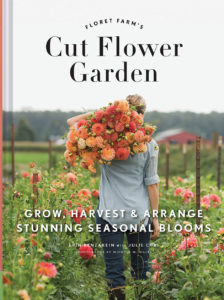


Sonya on
Wow! What a gift – thank you!!!